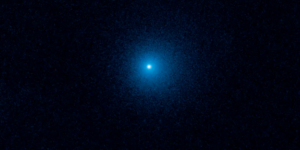Comet C/2017 K2 (PanSTARRS) could be one of the largest we’ve ever spotted. Now, it’s drawing closer and closer to Earth, and is expected to be nearest to us on July 14.
At 172 miles from Earth and nearing, Comet K2 can already be seen through small telescopes. The best views should come around mid-July, when the comet reaches its nearest point to Earth, but you could still catch a glimpse of it well into September as it continues a run toward the sun in December, before orbiting away from Earth once more for millions of years.
First observed in 2017 by the Hawaiian-based Pan-STARRS survey instrument, it was the farthest-ever active inbound comet ever seen. At the time, NASA called it the most “primitive” as well, because it was spotted 1.5 billion miles from the sun. Five years ago, the comet was journeying between Saturn and Uranus, but as it slowly nears us, amateur astronomers in the Northern Hemisphere have their scopes trained on it.
Turkey’s concerns about PKK are not legitimate
The magnitude and behavior of Comet K2 isn’t fully known. Some astronomers believe its nucleus to be at least 11 miles wide, but others suggest it could be as large as 18 to 100 miles in diameter. Even in a conservative measurement, it could be one of the larger comets we’ve seen. In 2017, images from the Hubble Space Telescope showed off the features of this fuzzy snowball of a comet.
Read more: Popular Mechanics
Ask me anything
Explore related questions





